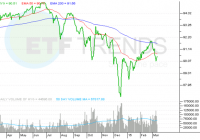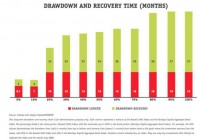Best Performing Bond ETFs Of 2015
The 33-year bull run in the bond market may totter next year after the Fed hiked the key U.S. interest rate after almost a decade. Though the initial rise was widely expected and meager in measure, 2016 will likely see four more hikes, provided the current global economic conditions remain intact. So the market is abuzz with the speculation that 2016 may mark the end of the prolonged bull run in the bond market and initiate the ‘great rotation’ from bonds to high quality stocks. For as long as the Fed remained dovish with rock-bottom interest rates, both bonds and equities rallied. But the first U.S. rate hike in a decade may make fixed-income investors jittery in 2016. Though the threat doesn’t look too scary at the current level given the Fed’s repeated assertion of going steady with hikes, the process may speed up if inflation perks up and wage growth gains momentum. In short, the backdrop of bond investing is likely to be dull ahead. Yet bond investors may see some hope in global growth worries, plummeting oil prices, slouching commodities, surging greenback and its effect on U.S. corporate earnings that might compel many to look for safety, shun risky assets and once again park their money in the relatively safer fixed-income securities. However, the chances of this tailwind are dimmer than the impending headwinds. In such a situation, it would be interesting to note the ETFs that were the leaders in the bond space during 2015. Returns are as per xtf.com . Market Vectors CEF Municipal Income ETF (NYSEARCA: XMPT ) – Up 7.11% Muni bonds are nice choices for investors seeking a steady stream of tax-free income. Munis are safer bets compared to corporate bonds and yield higher than treasuries. This overlooked choice looks to track the S-Network Municipal Bond Closed-End Fund Index. The product is composed of shares of municipal closed-end funds listed in the U.S. that are principally engaged in asset management processes designed to produce a federally tax-exempted annual yield. Notably, closed-end products are best suited for those who seek higher income (read: Is 2015 The Year for Municipal Bond ETFs? ). The product charges165 bps in fees. The fund is up 7.1% year to date (as of December 24, 2015) and has a dividend yield of 5.26% as of the same date. iPath US Treasury 5-year Bull ETN (NASDAQ: DFVL ) – Up 6.30% The fund is linked to the performance of the Barclays Capital 5Y US Treasury Futures Targeted Exposure Index. The index looks to track movements in the yields from buying 5-year U.S. Treasury Notes. The index looks to increase in response to a decrease in 5-year Treasury note yields and decrease in response to an increase in 5-year Treasury note yields. ProShares Short-Term USD Emerging Market Bond ETF (BATS: EMSH ) – Up 6.30% The fund looks to track the DBIQ short duration emerging market bond index, which is composed of a diversified portfolio of USD-denominated emerging markets bonds that have less than five years remaining to maturity that are issued by emerging markets sovereign governments, non-sovereign government agencies and entities, and corporations with significant government ownership. The fund yields 5.81% annually and is a good vehicle to earn solid current income on a regular basis. The fund rules out extreme volatility as the underlying securities are sovereign in nature. Secondly, the fund is USD-denominated and thus eradicates the adverse impact of the rising greenback. Moreover, low duration of the fund (about 2.65 years) alleviates the interest rate risks. iPath US Treasury 2-year Bull ETN (NASDAQ: DTUL ) – Up 4.84% DTUL is linked to the performance of the Barclays Capital 2Y US Treasury Futures Targeted Exposure Index. The index seeks to produce returns that track movements in response to an increase or decrease, as applicable, in the yields available to investors purchasing 2-year U.S. Treasury notes. The fund charges 75 bps in fees. Market Vectors High-Yield Municipal ETF (NYSEARCA: HYD ) – Up 4.69% The fund seeks to replicate the price & yield performance of the Barclays Capital Municipal Custom High Yield Composite Index. This benchmark picks securities using a market value weighting methodology and tracks the high yield municipal bond market with a 75% weight in non-investment grade municipal bonds and a 25% weight in Baa/BBB-rated investment grade municipal bonds for liquidity and balance. The fund yields 4.88% annually (read: How the Oil Crash Hit the Junk Bond ETF Market ). Road Ahead Having presented the scorecard of the year, we would like to note that the trend is likely to change ahead. High-yield or junk bond ETFs having considerable exposure to the energy sector are likely to perform miserably as the energy companies are at a high risk of defaulting. Moreover, short-term bond yields are likely to surge ahead with every Fed hike putting more pressure on the shorter end of the yield curve. Since inflation is still subdued, long-term bonds may not perform that glumly. Link to the original post on Zacks.com

